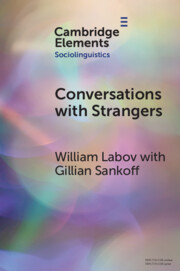Element contents
Conversations with Strangers
Published online by Cambridge University Press: 19 July 2023
Summary
- Type
- Element
- Information
- Series: Elements in SociolinguisticsOnline ISBN: 9781009340922Publisher: Cambridge University PressPrint publication: 17 August 2023

